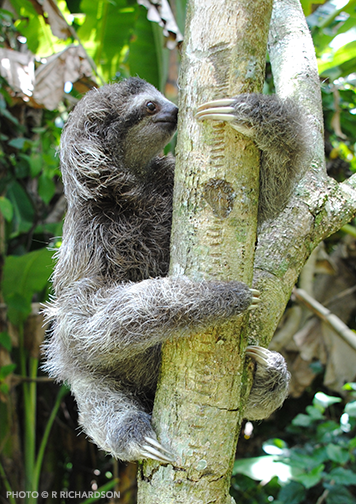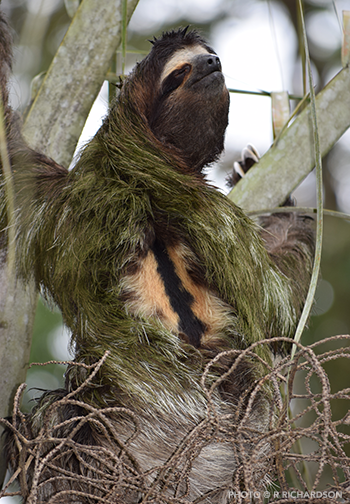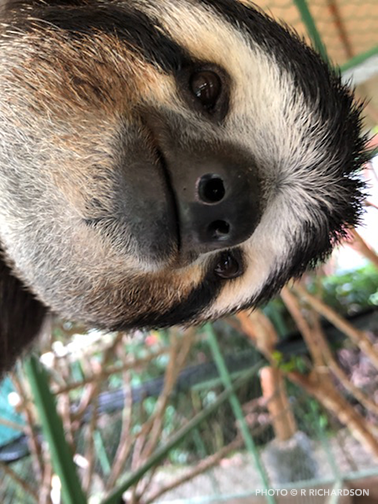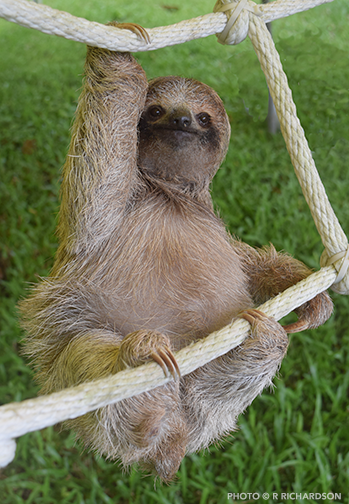Basic characteristics



- Three fingers on forelimbs
- Three toes on hind limbs
- Herbivore (specific leaves only)
- More diurnal than nocturnal,
mobile any time of day if needed - Weight: 2.3 – 6.5 kg
- Outer guard hairs and downy undercoat
- Shades of gray or brown, mottled with black & white
- Dark mask around eyes
- Back hair color:
- Males, a unique patch on the upper back of short orange fur with a black stripe and arrangement of spot called a speculum
- Females: long back hair with stripes and spots. No orange coloration
- Small, rounded head
- Large mouth that appears smile-shaped
- Ten upper and eight lower molars, no incisors
- Nine cervical vertebrae
- 24 ribs (12 sets)
- Four inch tail
- Arms twice as long as legs
- No external genitalia
- Gestation: Approximately six months (not scientifically known)
Of the two families of sloths found in Costa Rica, Bradypus variegatus (Three-fingered sloth) is the more familiar to most people. Hair is gray/brown with a darker face, white forehead and raccoon-like band around the eyes. The hair on the head tends to form a fringe that frames the forehead.
Arms nearly twice as long as legs. Head to tail length 400–690 mm, Weight 6.5 kg maximum.
Active during day and night, Bradypus is a strict vegetarian and selective about its choices. Bradypus may eat up to 96 varieties of leaves, however, each individual typically selects from just 5 or 6 different tree species.
Bradypus spend more time in single trees than the Choloepus does. It is estimated that Bradypus change trees once every 2.2 days.
Spending long hours in often relatively open canopy, the slow moving sloth would seem to be easy prey for large raptors or snakes. To combat this somewhat the Three-fingered sloth has evolved a specialized neck structure. Unlike other mammals with 7 cervical vertebrae, Three-fingered sloths have 9 which allows them to rotate their heads up to 300 degrees. This feature allows them to scan for predators without wasting precious moments and energy adjusting body position. Adult males of this species are easily distinguished from females by a distinct pattern of short, pale to bright gold-colored hair on their backs, a black stripe drawn vertically through, with scattered dark spots. These markings are unique to each sloth like fingerprints are to humans and are therefore very useful for individual identification in research.
These animals may live 30 years or more and it is thought that both males and females reach sexual maturity at around 3 years of age. The gestation period, which is not scientifically known, has been guessed to be around six months. A single young is born and for the next eight to twelve months it will be carried and cared for by its mother. During this period the mother teaches the young the location of select food trees in the home range and passes on her own specific tree preferences. After this period the mother moves away and the young sloth inherits the mother’s set of tree preferences on her home range. The mother moves far away from the youngster, but within her own territory for several months and the process begins anew.
